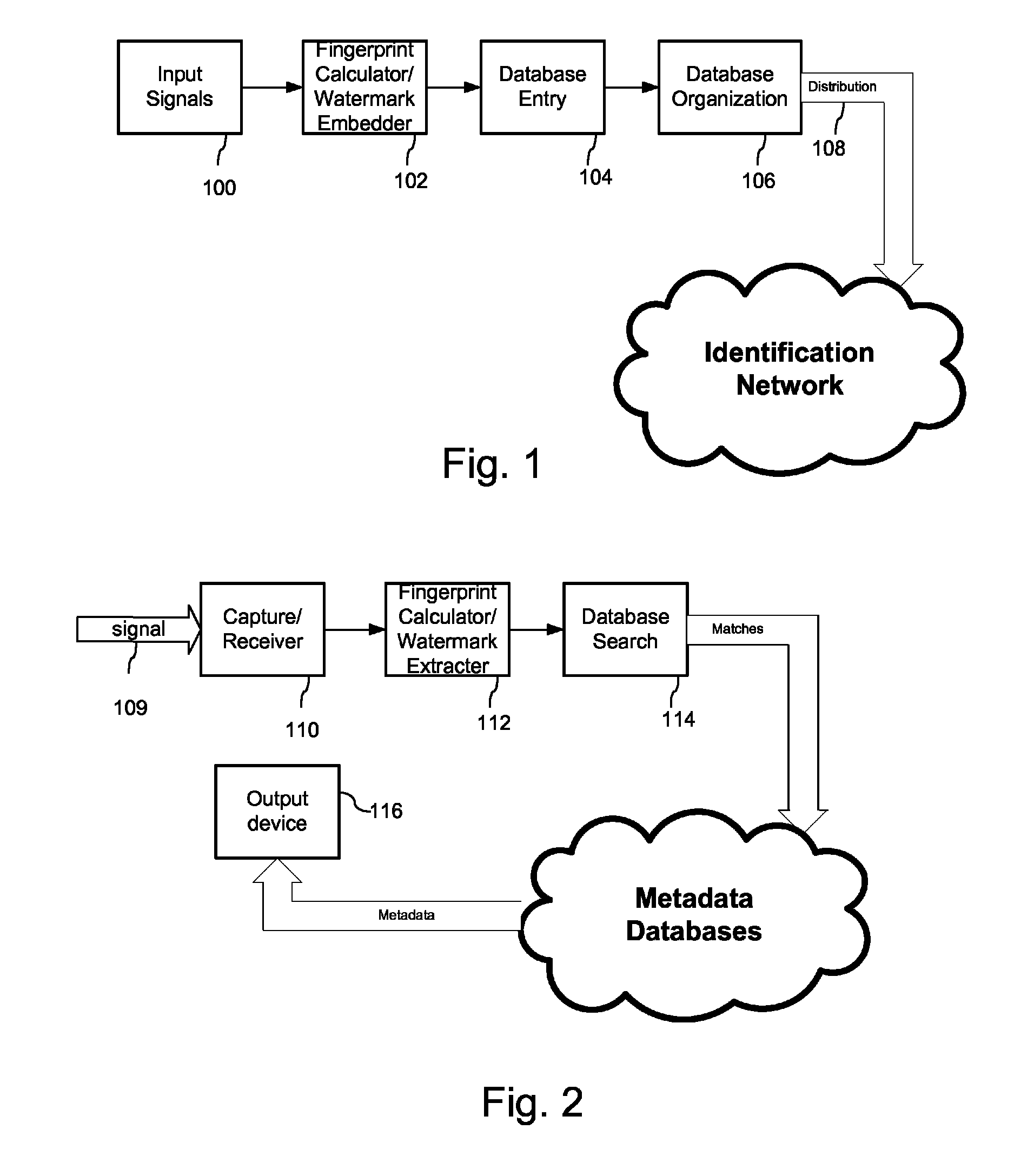Combined watermarking and fingerprinting
a fingerprinting and watermarking technology, applied in the field of signal processing, can solve the problems of increasing the size of the fingerprint database, reducing the robustness of the watermark, and not providing the ability to distinguish between different portions of the video signal, so as to improve the signal-to-noise ratio, improve the robustness, and improve the robustness
- Summary
- Abstract
- Description
- Claims
- Application Information
AI Technical Summary
Benefits of technology
Problems solved by technology
Method used
Image
Examples
Embodiment Construction
1.1 Using Watermarking to Reduce Search Space for Fingerprint Matching
[0015]Kalker and Oostveen (Kalker, A., Oostveen, J., U.S. Pat. No. 7,168,083, Jan. 23, 2007) describe a scheme where a watermark is embedded in media signals with the payload representing an index in a fingerprint database. They contemplate a relatively small payload that conveys information about the section of the database within which the media content is to be searched. On detection of the watermark, the payload can be used as an index to limit the database search needed for searching and matching with the fingerprint database.
1.2 Identification Using Watermarking, Localization Using Fingerprinting
[0016]This scheme discussed in Section 1.1 can be further extended to encode the embedded watermark with a full payload that conveys all pertinent identification information about the media signal. Rather than identify a section of the database, the payload can then identify the specific media signal itself. In addit...
PUM
 Login to View More
Login to View More Abstract
Description
Claims
Application Information
 Login to View More
Login to View More - R&D
- Intellectual Property
- Life Sciences
- Materials
- Tech Scout
- Unparalleled Data Quality
- Higher Quality Content
- 60% Fewer Hallucinations
Browse by: Latest US Patents, China's latest patents, Technical Efficacy Thesaurus, Application Domain, Technology Topic, Popular Technical Reports.
© 2025 PatSnap. All rights reserved.Legal|Privacy policy|Modern Slavery Act Transparency Statement|Sitemap|About US| Contact US: help@patsnap.com



